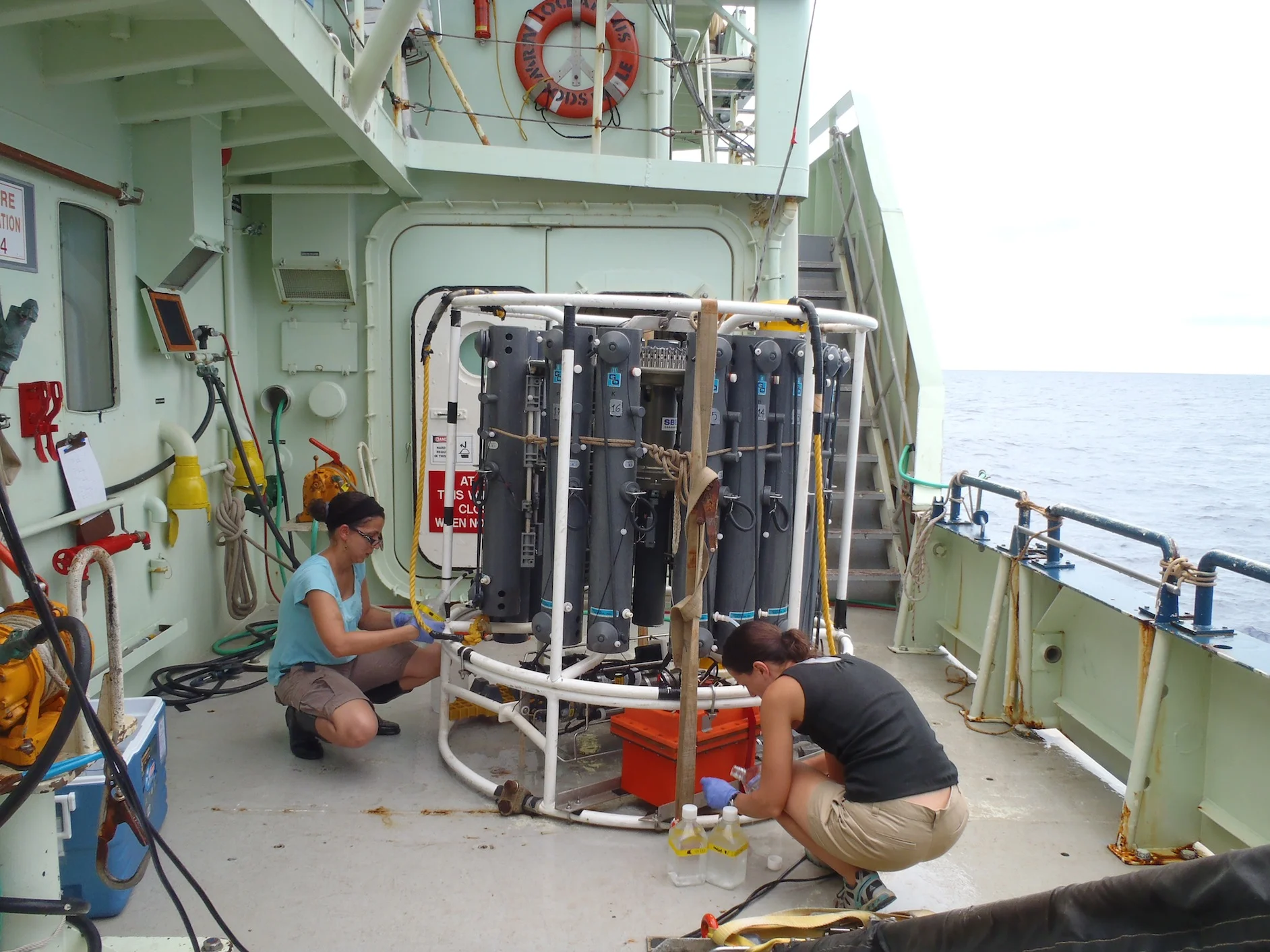To have a brine-filled basin like Orca, the super-salty fluid has to flow in from somewhere. But where? The published literature on Orca geology suggests that the salt diapirs that donate salt to the deep basin are located on the eastern flank of the central basin. We wanted to find it and better yet, SEE it, and, even better, SAMPLE it!
Magic in slow motion
A few days ago, I posted on hydrate-derived brine and noted a difference between hydrate-derived brine and salt-dissolution derived brine. Currently, we are studying one of the most spectacular salt-dissolution derived brine ecosystems in the Gulf: The Orca Basin. I could spend a year sampling in Orca and find something new every day. We’re here for one more dive and I cannot wait to get back…hopefully in the next year or two.
The weather wars
Each of us has events in our life that shape our future. As a junior at UNC-Chapel Hill, I was a pre-med major and I took an elective oceanography class. After two weeks of lectures, I was hooked, thanks largely to an incredibly smart, engaging and truly amazing Professor, Dr. Conrad Neumann. Thank You Conrad; you changed my life for the better. Conrad’s enthusiasm for ocean science was contagious and I was hooked.
Getting your bearings
People often ask ‘what’s it like to be in the Alvin?’ My answer is always the same: it’s magical; a life changing experience; more incredible than you could ever imagine. It is magical. It is life changing. It is incredible. But sometimes it’s also frustrating: scientific instruments may not perform to specs or may fail all together and every once in a while, finding a target – that proverbial needle in a haystack a mile under water – is tough. Then there are the cases where you want to do one thing, go to one place, grab one more sample, and for whatever reason, it does not happen and you feel like a failure; those things leave me with a feeling of immense frustration.
Change over time
The Gulf of Mexico is home to many diverse and fascinating super-salty (=hypersaline or brine) habitats. One of the most unique brines we’ve ever sampled in the Gulf is the mud volcano in Green Canyon block 246 (GC246). GC246 is located approximately 200 km SW of the Mississippi Delta on the flank of the upper-middle continental slope in the Gulf of Mexico. The GC246 block consists of featureless mud plains rising to series of a pockmarked mud mounds at depths around 900 m below the sea surface. It is a truly spectacular site.






